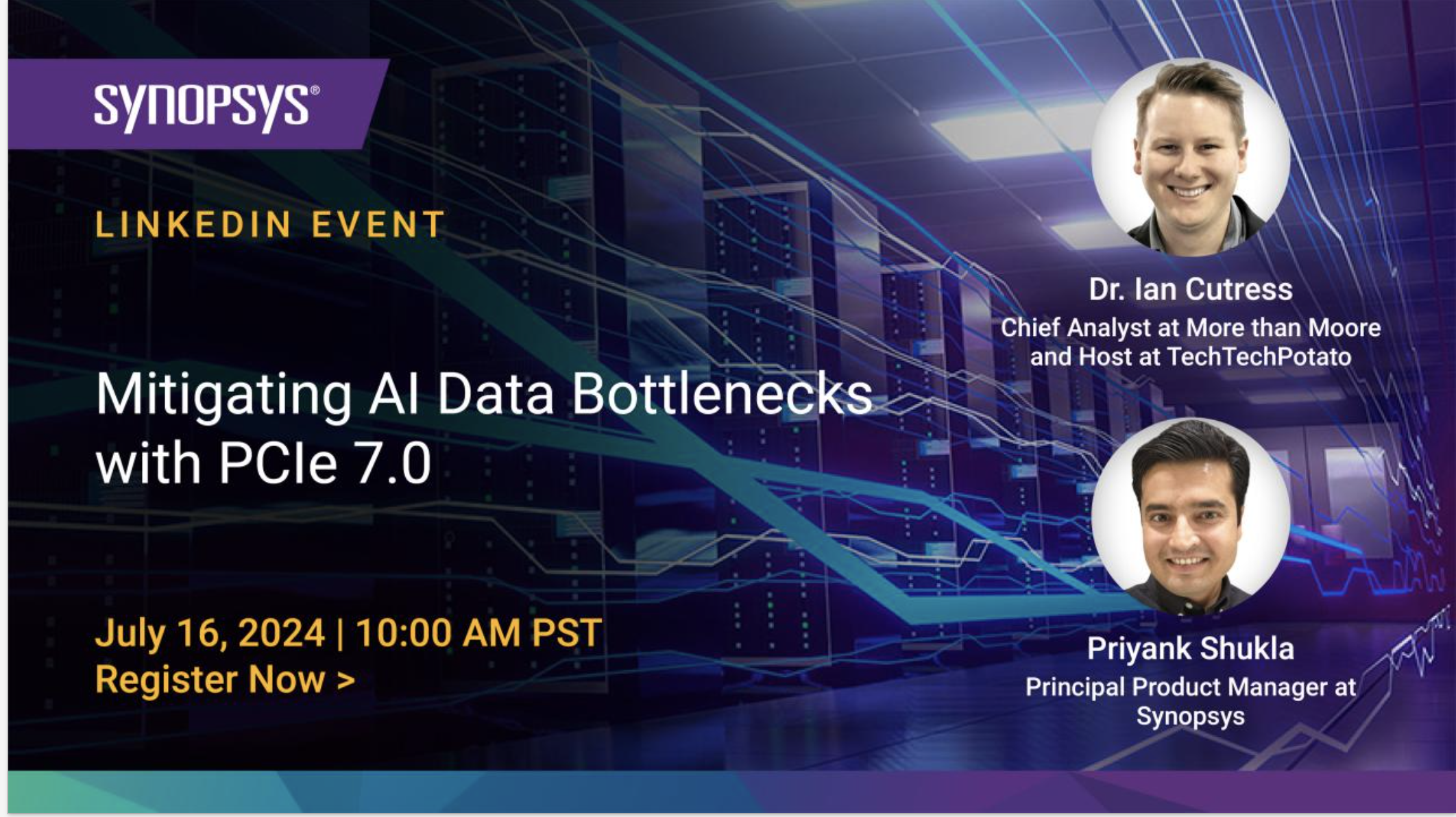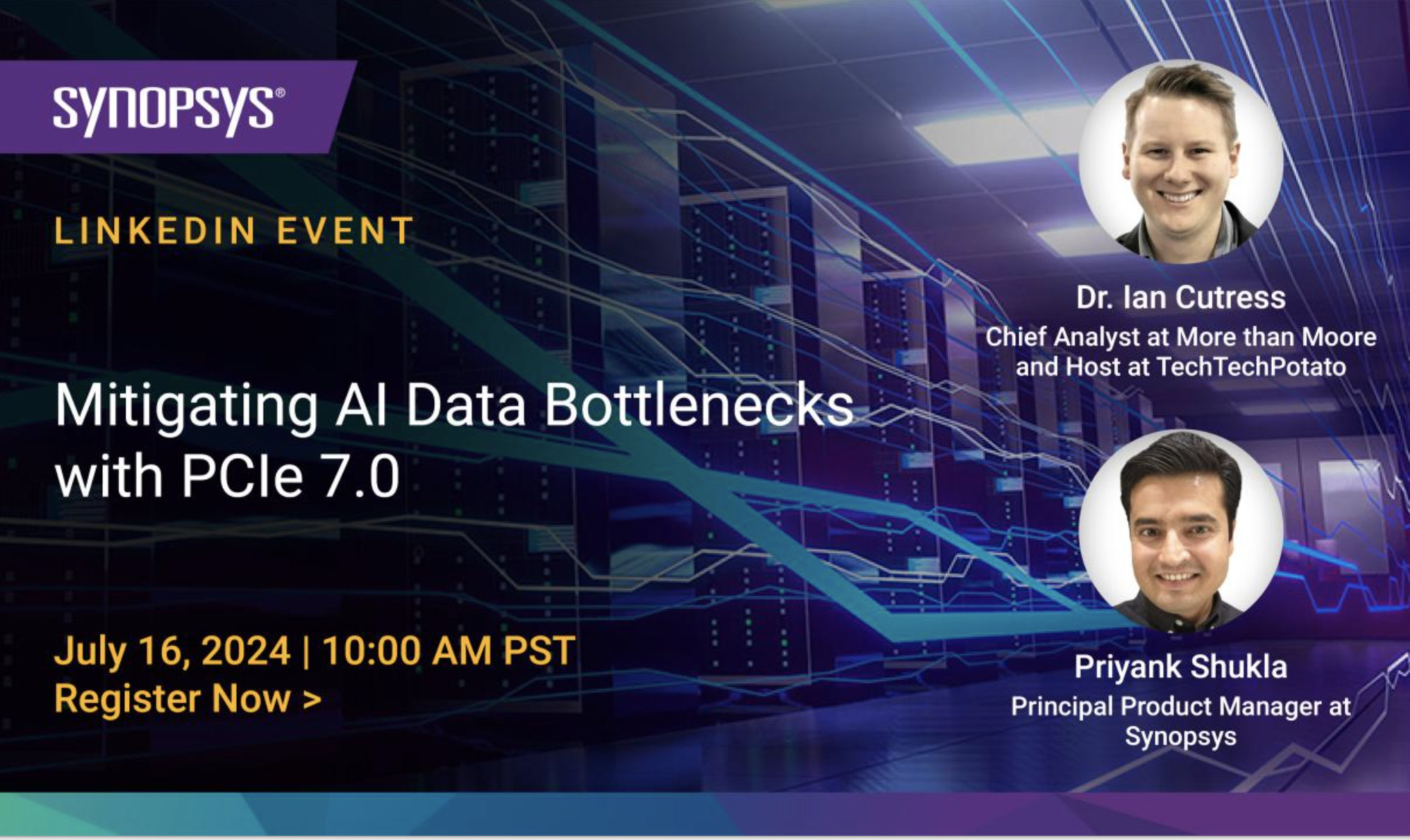
During a recent LinkedIn webcast, Dr. Ian Cutress, Chief Analyst at More than Moore and Host at TechTechPotato, and Priyank Shukla, Principal Product Manager at Synopsys, shared their thoughts regarding the industry drivers, design considerations, and critical advancements in compute interconnects enabling data center scaling to support AI demand.
Understanding AI Data Bottlenecks
Artificial Intelligence (AI) has grown exponentially over the past decade, driving innovation across multiple industries. AI workloads, especially in deep learning and large-scale data processing, require vast amounts of data to be transferred between CPUs, GPUs, and other accelerators. These data transfers often become bottlenecks due to limited bandwidth and high latency in interconnect technologies. As AI models grow in size and complexity, the demand for higher data transfer rates and lower latency increases, making efficient data movement a critical factor for performance. Ever increasing complexity and scale of AI models have led to significant data bottlenecks, hindering performance and efficiency.
Memory and Interconnect Technologies
To process data, we need to store it in memory. Consider a large dataset that must be stored in a chip, processed, and then stored again in memory. This necessitates a wider and faster signal chain or data path. Next-generation memories, such as HBM, which is on-chip or nearby, and DDR, which is in the same rack but not on the same package are utilized. Additionally, multiple chips, like GPUs or various accelerators, must communicate with each other, and that’s where technologies like Peripheral Component Interconnect Express (PCIe) are essential.
Key Challenges in Addressing Data Bottlenecks
Whenever people talk about data bottlenecks, it directly highlights the need for faster interconnects. Current PCIe versions (such as PCIe 4.0, 5.0 and 6.0) do provide substantial bandwidth but fall short for future AI workloads that require even higher data throughput and lower latency. High latency in data transfer can significantly degrade the performance of AI applications, particularly those needing real-time processing. As AI systems scale, interconnect technologies must support a larger number of devices with minimal performance degradation.
The Value of PCIe in AI and Machine Learning
An open standard such as PCIe fosters innovation as the whole ecosystem comes up with their best technologies. It allows for system-level optimization, addressing power efficiency and other challenges. The industry makes better decisions with open standards, which is crucial as data center power consumption is becoming a growing concern. The future involves integrating photonics directly into the chip, leveraging optical channels for faster and more efficient data movement. The industry is adopting optics, and PCIe will continue to evolve with these advancements. The standard’s predictable path and continuous innovation ensure it remains relevant and beneficial.
PCIe 7.0 and Practical Implications for AI
PCIe 7.0, the latest iteration of the PCIe standard, offers significant improvements in bandwidth, latency, power efficiency and security. This evolution, facilitated by collaborative industry efforts and open standards, enables better system-level optimization and addresses challenges such as data center power consumption. AI training processes, particularly for large neural networks, require substantial computational power and data movement. PCIe 7.0’s increased bandwidth and reduced latency can significantly speed up the training process by ensuring that data is readily available for computation. Similarly, inference tasks, which often require real-time processing, will benefit from the quick data transfers and low latencies facilitated by PCIe 7.0. The future of PCIe also involves integrating photonics for faster and more efficient data movement, ensuring its continued relevance and benefit to AI advancements.
Summary
PCIe 7.0 represents a significant advancement in addressing the data bottlenecks that impact AI performance. By providing higher bandwidth, lower latency, and improved efficiency, this interconnect standard helps ensure that AI systems can handle the increasing demands of data-intensive applications. As organizations continue to push the boundaries of AI, PCIe 7.0 will play a vital role in enabling faster, more efficient data processing and supporting the next generation of AI innovations.
In June 2024, Synopsys announced the industry’s first complete PCIe 7.0 IP solution. You can also refer to this related SemiWiki post and for more details, visit the Synopsys PCIe 7.0 product page.
Also Read:
The Immensity of Software Development the Challenges of Debugging (Part 1 of 4)
Share this post via:






Comments
There are no comments yet.
You must register or log in to view/post comments.